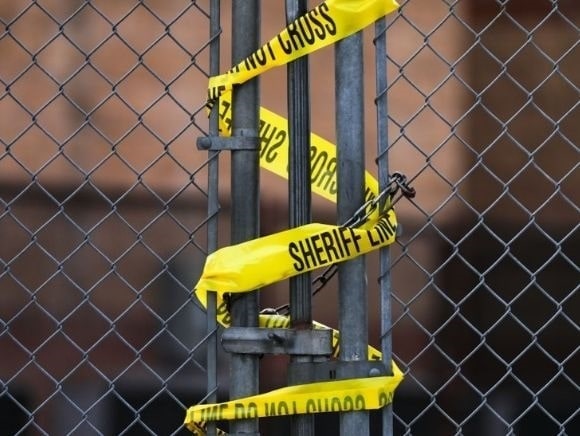Ever since the Uvalde school shooting took the lives of 19 children and two teachers, the national debate has focused on the weapon rather than the shooter. Lawmakers are busy cutting bipartisan deals hoping that more gun control measures will solve the problem. But what makes the political class – and let’s face it, many Americans – believe doing more of the same will effectuate meaningful change? It seems appropriate then to look at all aspects of this national scourge haunting our public schools. The most obvious of these would be to examine the psychological framework of the shooters. Who are they? What motivates them? Is there a pattern to their madness that can be identified early on to prevent such extreme violence?
Liberty Nation reached out to Lorraine Silvetz, MSW, to answer some of these questions. Silvetz is the executive director of the Global Stress Initiative and a trained psychotherapist with a master’s degree in Social Work from New York University specializing in the treatment of returning veterans suffering from Traumatic Brain Injury (TBI), Post-Traumatic Stress Disorder (PTSD), and suicidal ideation. What follows is our conversation regarding the mind of a school shooter:
Leesa K. Donner: In researching statistics on American school shooters, I was surprised to see the age of these killers. All of them are teenagers – some as young as 12 and 13. It appears the most common age of a school shooter is 17. What can you tell us about these all-important developmental years, and what triggers these young people to resort to extreme violence?
Lorraine Silvetz: Certainly the teenage years are challenging. In the last few years, the isolation has been even more exacerbated during the pandemic. And these young people are obviously not being spotted early enough as to the problems that they have. I think we have to focus on prevention. Once school personnel start seeing erratic behaviors, or signs of violence or tendency towards rage, it’s a signal that this young person needs to get help sooner rather than later, before it gets to a point of the extreme behavior that we’ve seen. They’re not getting the intervention that I believe that they need early enough. Some of the psychological factors we’re seeing in this age range … is that they suffer from feelings of isolation and depression. They’re often sleep-deprived, and with sleep deprivation, once it becomes long and chronic, there is a tendency to develop psychosis, which could include hallucination, hallucinations plural, disturbed thinking, thinking irrationally. And often, these kids have delusions of grandeur. It’s kind of like a secret king thinking. It’s delusional thinking that goes something like this: “If it was a perfect world, they would know I was the king.” This kind of thinking is distorted, obviously, but it is very common among these young people.
LKD: According to data compiled about K-12 violence, the perpetrator is almost always male. Statistics show that most of these boys come from homes where the father is not present. Do you think there is a sociocultural connection between the need to act out in violent ways and the lack of a complete parental unit?
LS: Absolutely. I think there are many causative factors, and one of them is not having a strong family system or a strong sense of support at home. Single-parent families suffer more than if you have two functional and supportive parents. It makes a huge difference. So yes, the broken family system is a part of the equation that leads to these tragedies.
LKD: One of the elements that has been largely overlooked is the connection between the shooter and the school or the lack thereof. Statistics show that 43% of the time, the shooter was a current student at the school. But 19.9% of the time, there was no connection between the two. By an almost three to one margin, the violence was targeted rather than random. In other words, the culprit had a specific person or persons in mind. This, of course, wasn’t the case with the Texas school shooting, so let’s focus on the venue for a moment. No one seems to be pointing out the obvious – that at least a third of these kids are picking a school – any school – to commit their heinous crimes. It’s legitimate to ask what the hell is going on in these educational environments.
 LS: It’s a good question. Certainly, one of the factors is that, unfortunately, it’s an easy place for shooters because it’s a gun-free zone. It’s not protected. And so, in many ways, if they’re looking to kill, they know there’s really no protection in a location like that for the students. And that is a concern. Now, I will give you an example in Israel. To try to lower the incidence of in-school violence, they started to promote grandfathers becoming armed guards in the schools. And soon after that, they were able to diminish the amount of school violence dramatically. So basically, the perpetrator would know, “If I go in there, there’s someone there who is armed, who could stop me.”
LS: It’s a good question. Certainly, one of the factors is that, unfortunately, it’s an easy place for shooters because it’s a gun-free zone. It’s not protected. And so, in many ways, if they’re looking to kill, they know there’s really no protection in a location like that for the students. And that is a concern. Now, I will give you an example in Israel. To try to lower the incidence of in-school violence, they started to promote grandfathers becoming armed guards in the schools. And soon after that, they were able to diminish the amount of school violence dramatically. So basically, the perpetrator would know, “If I go in there, there’s someone there who is armed, who could stop me.”
LKD: Another statistical shocker is that 86% of the shooters died in their attack – primarily from suicide. So, does that tell us we are dealing with a nihilist mindset with little or no regard for their own life, let alone the lives of others?
LS: Certainly, it’s a nihilist mindset and basically, they feel that their lives are meaningless. And they reject all moral principles. And so, after they’ve shot in schools like this, they see the carnage. They know that they’ll end up in prison. At that point, they feel their lives are meaningless anyway. And they, obviously, do themselves in. And so they’re not only homicidal. They’re suicidal, but the scary part is they not only want to hurt themselves, but they also want to hurt others.
LKD: Putting it all together, what would you say is the psychological profile of a school shooter? And is there any way to identify behaviors as destructive before they go on a rampage? I mean, what would you be looking for?
 LS: Well, if we see the youngster is showing signs of anger, by their behavior in class, by their lack of participation, also, that they’re very isolated, have few friends. You might even see it by self-injurious behavior, where they’re suddenly cutting all parts of their body and acting out against their parents’ wishes. I mean, is there a lot of rebelliousness happening? There’re a multitude of factors to see the child is not doing well. And then obviously, if they go to a doctor and there’s an issue, a psychiatrist is letting them know they need some support, whether it’s psychological, or emotional support with talk therapy and/or meds, then you know that child should be watched, should be supported more than usual so that, God forbid, it doesn’t get to this point of no return.
LS: Well, if we see the youngster is showing signs of anger, by their behavior in class, by their lack of participation, also, that they’re very isolated, have few friends. You might even see it by self-injurious behavior, where they’re suddenly cutting all parts of their body and acting out against their parents’ wishes. I mean, is there a lot of rebelliousness happening? There’re a multitude of factors to see the child is not doing well. And then obviously, if they go to a doctor and there’s an issue, a psychiatrist is letting them know they need some support, whether it’s psychological, or emotional support with talk therapy and/or meds, then you know that child should be watched, should be supported more than usual so that, God forbid, it doesn’t get to this point of no return.
LKD: In a 2012 article in Psychology Today, Jamie Turndorf, Ph.D., wrote: “We also need to look at whether or not Selective Serotonin Reuptake Inhibitors (SSRI) or other therapeutic drugs were involved in this [Newtown, CT] catastrophe?” Have there been any relevant studies or research done on a possible connection between SSRIs and school shooters?
LS: I’ve seen many articles on the topic; whether there has been actual research, I couldn’t point you in that direction. But there are many doctors who have spoken out, knowing the history of many of these perpetrators includes being prescribed psychotropic drugs. One does need to study the correlation between taking those meds, which in some cases can cause violent behavior and outbursts along with suicidal ideation and a connection to violent actions. So, this has to be researched and considered because SSRIs were introduced the late 1980s, Prozac in 1988. And the rise in incidents of these mass shootings shows there was a sharp increase starting in the early 1990s. So, one has to ask the question – it begs the question – “Is there any causation from these medications?” And maybe we have to rethink giving them to younger people and also the dosages that they’re being given because there might be a connection.




